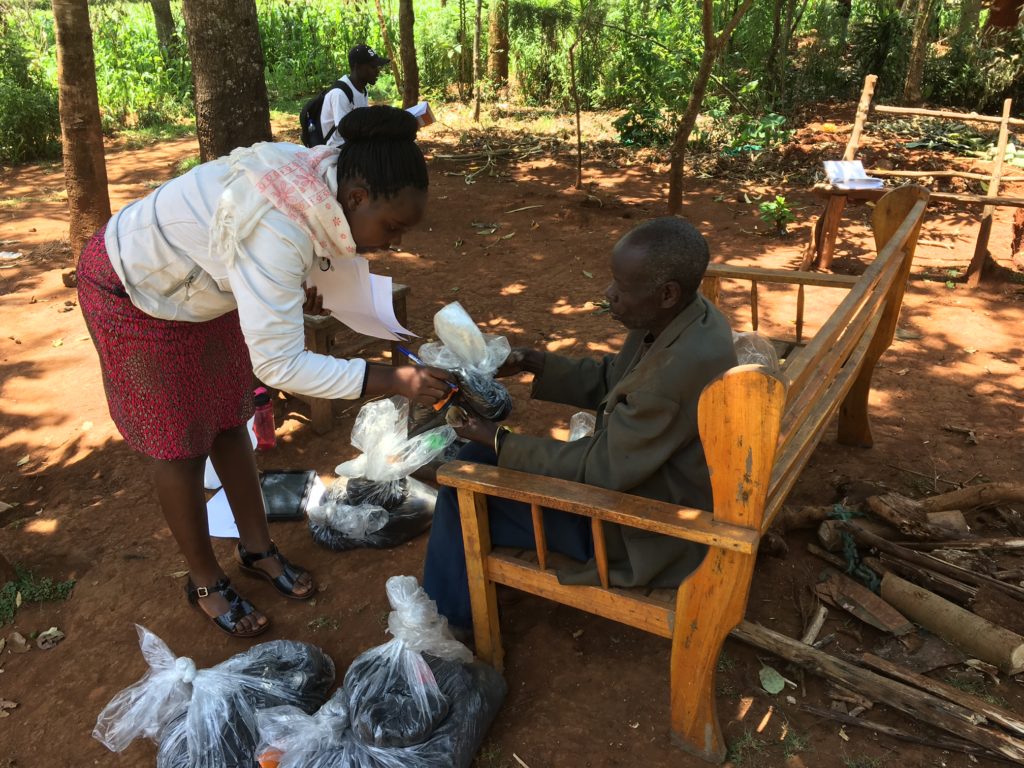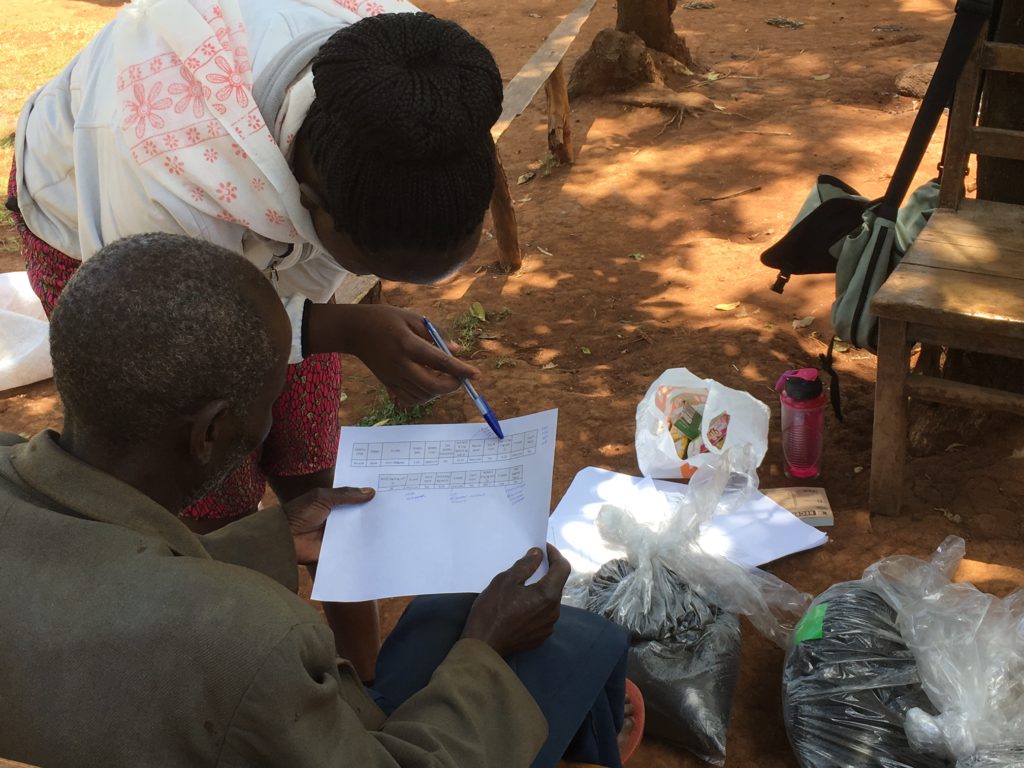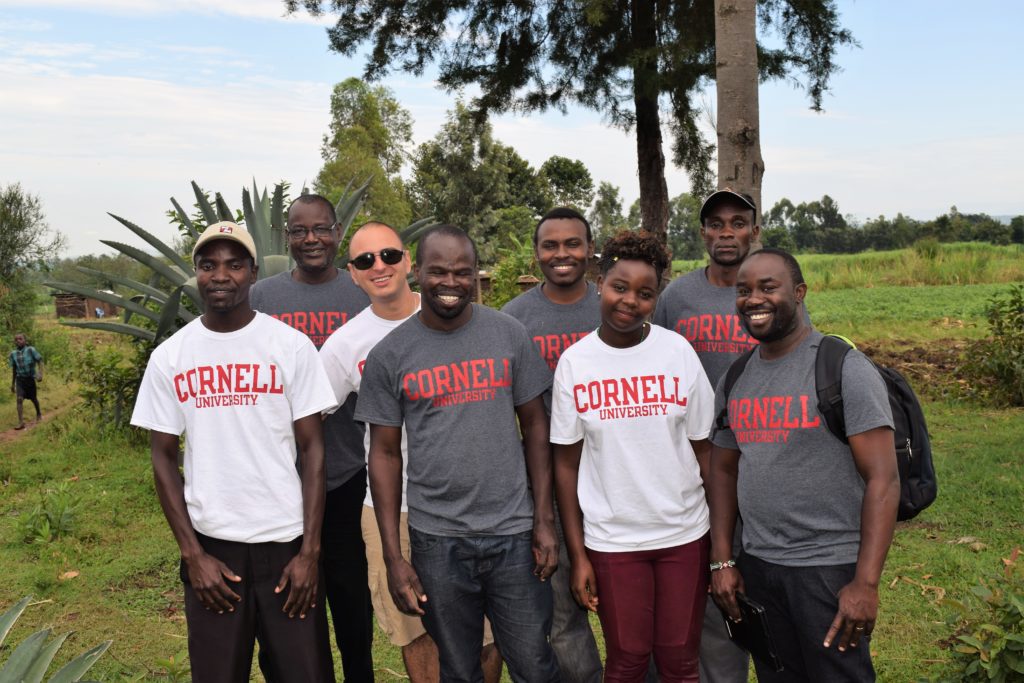
I conducted on-the-ground research for my doctoral dissertation in western Kenya from June through November, 2016, in partnership with the International Institute of Tropical Agriculture (IITA) and the World Agroforestry Centre (ICRAF). Together with my six-member team of enumerators and field technicians, we conducted surveys, experimental auctions, and measured farm plots of 550 farms in 18 villages of Kakamega, Bungoma, and Busia counties. A map of the surveyed village locations can be seen here. One major goal of this fieldwork was to determine whether farmer behavior would change with respect to agricultural inputs after learning soil test results from their own fields and receiving farm-specific fertilizer recommendations.
To answer this research question, we obtained village rosters from the 18 villages. Household heads were randomly selected from these official rosters, and selected household heads and their spouses (if alive/available) were individually surveyed, providing a total sample size of 884 individuals. We used individual, two-round experimental auctions based on Becker-DeGroot-Marshack to determine whether farmer valuations for various quantities of six different inorganic and organic inputs changed after receiving the soils information and recommendations. Following practice auctions, a cash endowment, and a baseline auction that measured the willingness to pay for each input by each farmer, each participant was randomly assigned by the enumerator’s tablet computer into one of the following treatments:
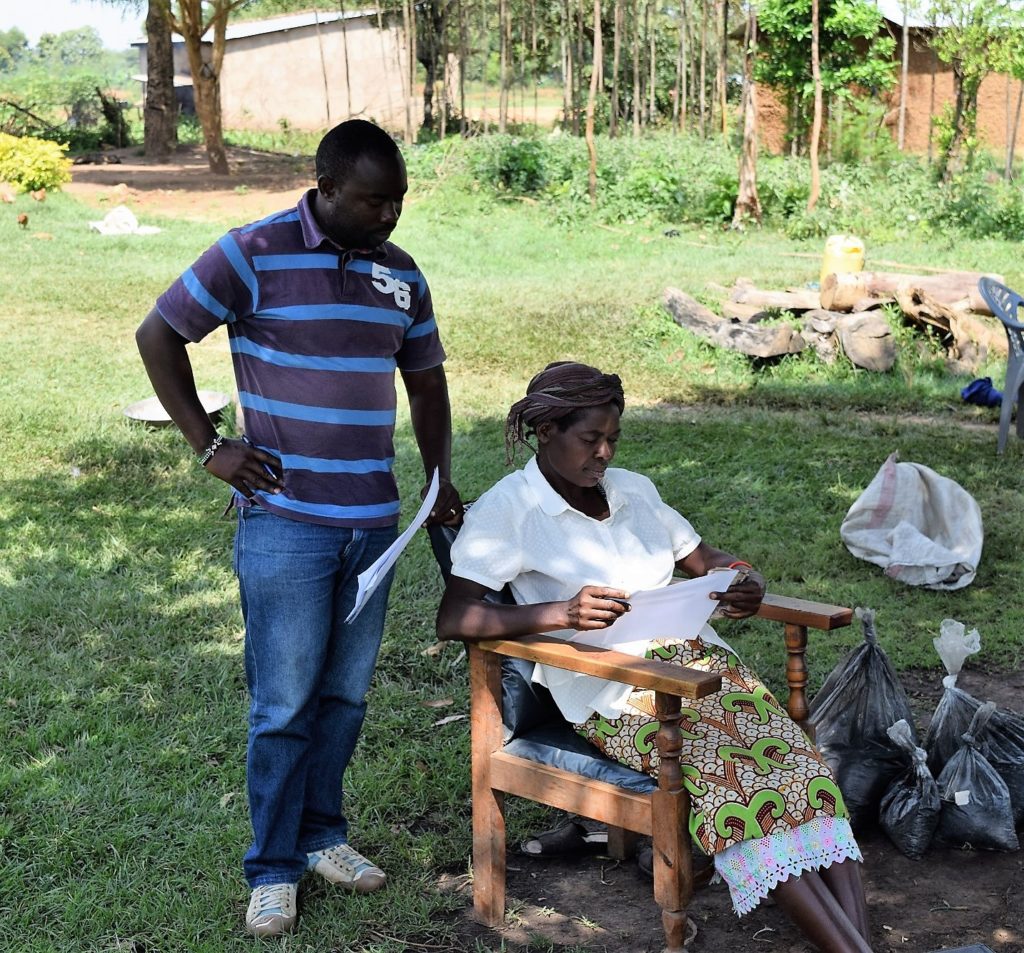
We also divided the sample into several treatments:
Treatment 1: Enumerators presented the participants with their soil test results, explaining them thoroughly and providing tailored fertilizer recommendations developed for this project by IITA.
Treatment 2: Enumerators showed the participant a chart that compared their soil test results with other anonymized test results in their village and a village average. The enumerator pointed out their placement on the village distribution but provided no specific fertilizer recommendations.
Treatment 3: Participants in this treatment received both treatments 1 and 2 together.
Control: Participants received no information transfer between auction rounds.
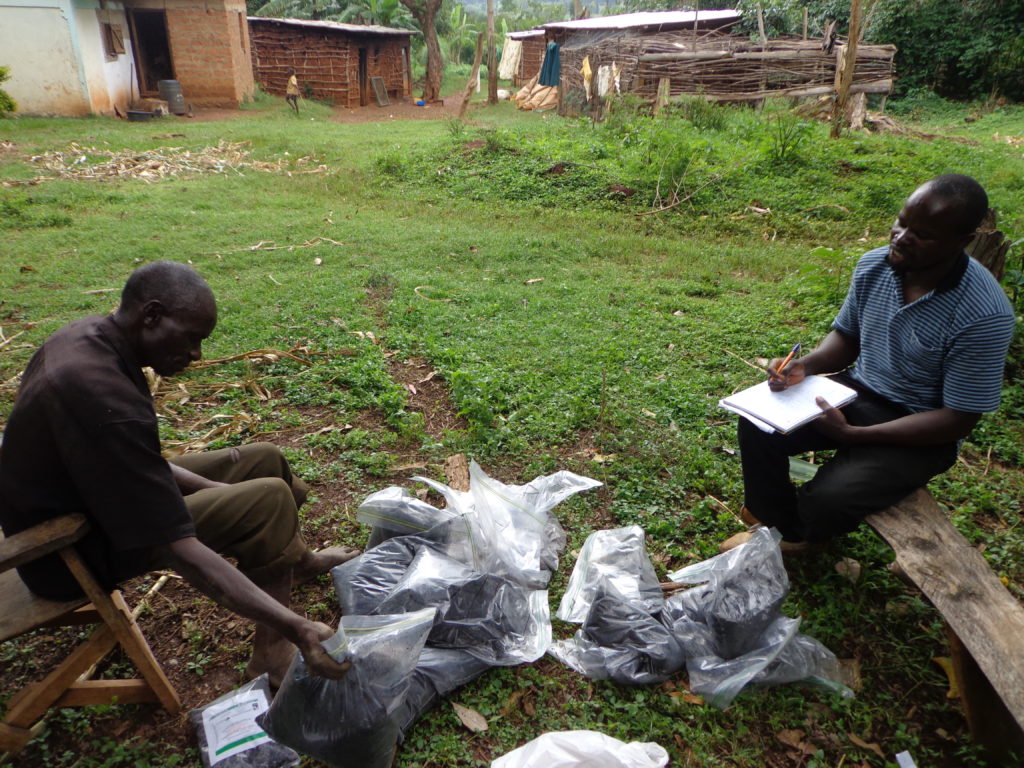
Immediately after the information treatment, an identical second auction round was held during the same sitting. Thus, the only change between the two auction rounds was the information treatment. After the second auction round, a random price, random input, and random auction round were chosen as binding. If the respondent bid the random price or higher for that input in the chosen round, they paid the random price and received the input. Otherwise, the respondent kept the full cash endowment. After the conclusion of the experiment, all farmers received the full set of information about soil tests and input recommendations, regardless of the treatment.
We find that providing soil test information does affect behavior with respect to input valuation, but the magnitude of the effect varies across inputs, treatments, and demographic groups. Especially significant are the strong differences in many cases between men and women in the sample and their outcomes from the auctions.
In March-April 2017, in partnership with IITA and ICRAF, the project was expanded to Nandi county in Kenya. An additional one hundred individuals participated in the project in this phase in villages surrounding the South Nandi Forest near Kapsabet town.
